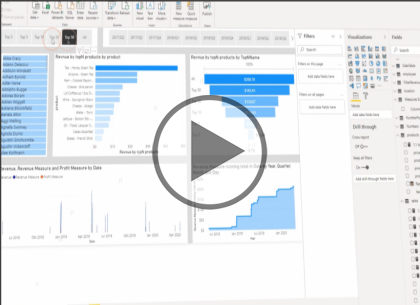Course description
Data Science is a growing field, this course explores Data Analysis Expressions(DAX), the language developed to interact with data.
Data Analysts are responsible for designing and building scalable data models, cleaning and transforming data, and enabling advanced analytic capabilities that provide meaningful business value through easy-to-comprehend data visualizations. The PL-300 Exam validates this expertise.
Prerequisites
Experience with Microsoft Excel, pivot tables and power pivot modelling is helpful.
Meet the expert
Nikolai is a mathematician and works as a data scientist in a large German company. He is focused mainly on gaining insights from data and creating a positive impact with this knowledge.
Course outline
DAX Module 1
Welcome to DAX (21:39)
- Introduction (00:13)
- Welcome to DAX (02:32)
- Let's look at our data (04:09)
- Measures vs. Calculated Columns (14:37)
- Summary (00:08)
CALENDARAUTO (20:43)
- Introduction (00:08)
- CALENDARAUTO (08:17)
- CALENDAR (05:08)
- How to create a complete date table (03:43)
- 0Key Measures Table (03:19)
- Summary (00:08)
Aggregation functions (29:00)
- Introduction (00:08)
- Aggregation functions (06:07)
- COUNT (14:05)
- SUMX - How does it work (08:32)
- Summary (00:08)
DAX Module 2
DAX Calculate (36:15)
- Introduction (00:13)
- CALCULATE Basics (10:53)
- Changing the Context with FILTER (06:31)
- ALL (07:53)
- ALLSELECTED (03:13)
- ALLEXCEPT (07:24)
- Summary (00:08)
DAX TimeIntelligence (31:02)
- Introduction (00:08)
- TimeIntelligence & DATEADD (11:18)
- Year-to-Date & Month-to-Date (05:19)
- TOTALYTD VS DATESYTD (08:54)
- DATESBEETWEEN (05:15)
- Summary (00:08)
DAX Advanced Topics (30:04)
- Introduction (00:08)
- Logical Operators (09:27)
- Commenting and Formatting (05:48)
- Variables (09:47)
- Quickmeasures use Intelligently (04:46)
- Summary (00:08)



